VISUALIZE PROSPERITY
An excerpt from the 40th Anniversary Edition of Creative Visualization by Shakti Gawain
If anyone can be called a self-help, self-actualization pioneer, it is Shakti Gawain. Years before “manifestation,” “the law attraction,” and “the secret” entered the lexicon, Shakti was sharing daily affirmations, meditations, and mental imagery practices that millions found could help them achieve goals, change habits, relax deeply, and significantly improve overall health and well-being. We hope you’ll enjoy this excerpt from the new 40th anniversary edition of her international bestseller Creative Visualization.
# # #
A very important part of the whole creative visualization process is developing a sense of prosperity. This means having the understanding, or consciously taking the point of view, that the universe is abundant, that life is actually trying to bring us what our hearts and souls truly desire — spiritually, mentally, emotionally, as well as physically. Almost everything you truly need or want is here for the asking; you only need to believe that it is so, truly desire it, and be willing to accept it.
One of the most common causes of failure when seeking what you want is “scarcity programming.” This is an attitude or set of beliefs about life that goes something like this:
There isn’t enough to go around….
Life is suffering….
It is immoral or selfish to have enough when others don’t….
Life is hard, difficult, a vale of tears….
You must work hard and sacrifice for everything you gain….
It’s more noble and spiritual to be poor….
These are all false beliefs. They are based on a lack of understanding of how the universe works, or a misunderstanding of some important spiritual principles. These beliefs are not of service to you or anyone else; they simply limit all of us from realizing our natural state of prosperity and plenty on all levels.
At the present time there is a reality in this world of starvation and poverty for many people, but we do not need to keep creating and perpetuating that reality. The fact is that there is more than enough to go around for every being on earth, if we are willing to open our minds to that possibility, and change our ways of using and distributing the world’s resources. The universe is a place of great abundance and we are all meant to be naturally prosperous, both in material and spiritual wealth, in a way that is balanced and harmonious with one another and with the earth that nourishes us.
In modern times, humankind has lost touch with its natural state of prosperity. Together, we are creating a world vastly out of balance, in which a relative few have far more than they need and are using up our natural resources at an alarming rate, while the majority suffer from serious lack. We are all responsible for creating this reality, and we can change it by changing both our way of thinking and our way of living. We need to reclaim our ability to appreciate and enjoy the simple pleasures in life. Many of us in the industrialized world need to cultivate a simpler, more natural lifestyle. We need to realize that after our basic needs are met, the experience of abundance has more to do with expressing our creative gifts in satisfying ways, and learning to give and receive in a balanced way, than it does with extravagant consumerism.
The truth about this earth is that it is an infinitely good, beautiful, nourishing place to be. The only “evil” comes from a lack of understanding of this truth. Evil (ignorance) is like a shadow — it has no real substance of its own; it is simply a lack of light. You cannot cause a shadow to disappear by trying to fight it, by stamping on it, by railing against it, or by any other form of emotional or physical resistance. In order to cause a shadow to disappear, you must shine light on it.
Take a look at your belief system and see if you are holding yourself back by not believing sufficiently in the possibility of prosperity. Can you actually realistically imagine yourself as a successful, satisfied, fulfilled person? Can you really open your eyes to the goodness and beauty and abundance that are all around you? Can you imagine this world transformed into a prosperous and supportive environment in which everyone can flourish?
You will experience difficulty in creating what you want in your personal life unless you view the world as a good place to be and a place that works for everyone.
This is because human nature is basically loving, and so most of us will not allow ourselves to have what we want as long as we believe that we might be depriving others in order to do so.
We have to understand in a deep way that having what we truly want in life contributes to the general state of human happiness and supports others in creating more happiness for themselves.
To create prosperity, we need to visualize ourselves living as we desire to live, doing what we love, feeling satisfied with what we attain, in a context of other people doing the same.
In a spirit of fun, try this exercise to stimulate your imagination and expand your ability to visualize true prosperity:
Abundance Meditation
Relax completely in a comfortable position.
Picture yourself in any lovely natural environment — perhaps by a green, open meadow with a lovely brook, or on white sand by the ocean. Take some time to imagine all the beautiful details, and see yourself fully enjoying and appreciating your surroundings. Now begin to walk, and soon find yourself in some totally different surrounding environment, perhaps exploring a waving field of golden grain, or swimming in a lake. Continue to wander and explore — finding more and more exquisitely beautiful environments of great variety — mountains, forests, deserts, whatever suits your fantasy. Take a little time to appreciate each one.
Now imagine returning home to a simple but comfortable and lovely environment, whatever would most suit you. Imagine having loving family, friends, and community around you. Visualize yourself doing work that you love, and expressing yourself creatively in ways that feel just right for you. You are being amply rewarded for your efforts, in internal satisfaction, appreciation from others, and financial return. Imagine yourself feeling fulfilled and thoroughly enjoying your life. Step back, and see if you can imagine a world full of people living simply yet abundantly, in harmony with one another and the earth.
# # #
Shakti Gawain is a bestselling author and a pioneer in the field of personal growth and consciousness. The 40th Anniversary edition of her classic work Creative Visualization: Use the Power of Your Imagination to Create What You Want in Life was recently published by New World Library.
Excerpted from Creative Visualization: Use the Power of Your Imagination to Create What You Want in Life © 2002 by Shakti Gawain. Printed with permission of New World Library, Novato, CA — www.newworldlibrary.com.










 Managing suicidal thoughts is not an easy task for anyone. While treatment is the most important part of handling this symptom of depression, it’s not always enough. There are a number of things you can be doing to help yourself overcome these thoughts and negative emotions. If you or someone you know is experiencing suicidal thoughts, here are a few things you can be doing to help cope.
Managing suicidal thoughts is not an easy task for anyone. While treatment is the most important part of handling this symptom of depression, it’s not always enough. There are a number of things you can be doing to help yourself overcome these thoughts and negative emotions. If you or someone you know is experiencing suicidal thoughts, here are a few things you can be doing to help cope. Donna Shea, Founder of the Peter Pan Center for Social and Emotional Growth and Nadine Briggs, Director of Simply Social Kids are authors of the How to Make and Keep Friends book and workbook series. Briggs and Shea specialize in coaching and creating simple tips and language for kids with social and emotional learning challenges.
Donna Shea, Founder of the Peter Pan Center for Social and Emotional Growth and Nadine Briggs, Director of Simply Social Kids are authors of the How to Make and Keep Friends book and workbook series. Briggs and Shea specialize in coaching and creating simple tips and language for kids with social and emotional learning challenges.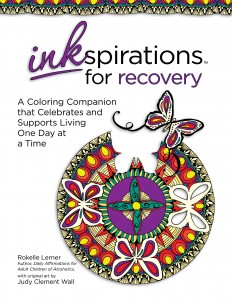 The trend this holiday season is all about ‘giving’ – not another ugly Christmas sweater, but something meaningful like a donation in the name of a family member or friend. Here’s a novel idea; give adult coloring books to a worthwhile group and put smiles on many faces! The beautiful Inkspirations series of adult coloring books from HCI has something for everyone – from Gardening and Pets, to Recovery and Christmas Joy – even postcards and greeting cards! To help make this a truly “giving” holiday, donate coloring books to your favorite charity, hospital, homeless or women’s shelter, where some extra moments of peace and encouraged wellness would be welcomed.
The trend this holiday season is all about ‘giving’ – not another ugly Christmas sweater, but something meaningful like a donation in the name of a family member or friend. Here’s a novel idea; give adult coloring books to a worthwhile group and put smiles on many faces! The beautiful Inkspirations series of adult coloring books from HCI has something for everyone – from Gardening and Pets, to Recovery and Christmas Joy – even postcards and greeting cards! To help make this a truly “giving” holiday, donate coloring books to your favorite charity, hospital, homeless or women’s shelter, where some extra moments of peace and encouraged wellness would be welcomed.
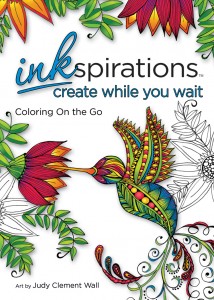
 Inkspirations Christmas Joy
Inkspirations Christmas Joy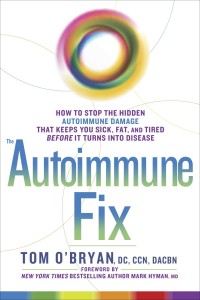 I was recently asked: “What’s the one thing you would do, more than anything else, if you were going to focus on being healthy?” My recommendation is to focus on creating a healthier microbiome. All the little steps that are easy to implement will add up to having a robustly healthy microbiome. Nothing is more important to the function of your body. Nothing has more control. Nothing impacts more of your tissues and organs than the microbiota. It’s the big kahuna.
I was recently asked: “What’s the one thing you would do, more than anything else, if you were going to focus on being healthy?” My recommendation is to focus on creating a healthier microbiome. All the little steps that are easy to implement will add up to having a robustly healthy microbiome. Nothing is more important to the function of your body. Nothing has more control. Nothing impacts more of your tissues and organs than the microbiota. It’s the big kahuna. About Dr. Tom O’Bryan:
About Dr. Tom O’Bryan: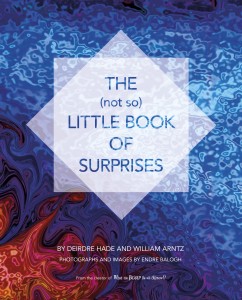 Guest post by Deirdre Hade
Guest post by Deirdre Hade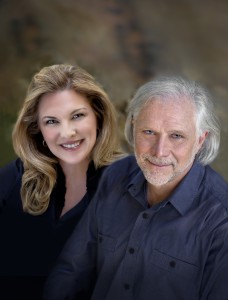
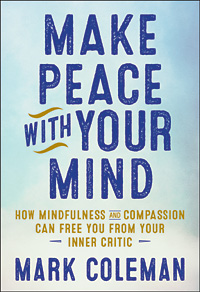 An Excerpt from Make Peace with Your Mind
An Excerpt from Make Peace with Your Mind  Mark Coleman is the author of Make Peace with Your Mind and Awake in the Wild. He is the founder of the Mindfulness Institute and has an MA in Clinical Psychology. Mark has guided students on five continents as a corporate consultant, counselor, meditation teacher, and wilderness guide. He lives in Northern California. Visit him online at
Mark Coleman is the author of Make Peace with Your Mind and Awake in the Wild. He is the founder of the Mindfulness Institute and has an MA in Clinical Psychology. Mark has guided students on five continents as a corporate consultant, counselor, meditation teacher, and wilderness guide. He lives in Northern California. Visit him online at